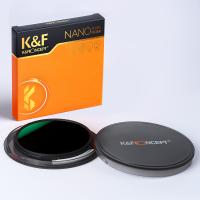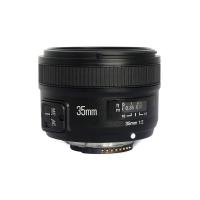Can We See Protons With A Microscope ?
No, we cannot see protons with a microscope. Protons are subatomic particles that are much smaller than the wavelength of visible light, which is what microscopes use to create images. Instead, scientists use particle accelerators and detectors to study the behavior and properties of protons. These tools allow scientists to indirectly observe protons by measuring the particles they interact with or produce during collisions.
1、 - Proton size and properties

Protons are subatomic particles that are found in the nucleus of an atom. They have a positive charge and are one of the fundamental building blocks of matter. The size of a proton is incredibly small, with a diameter of approximately 0.000000000000001 meters. This makes it impossible to see protons with a traditional microscope, which is limited by the wavelength of visible light.
However, recent advancements in technology have allowed scientists to indirectly observe protons using advanced imaging techniques. For example, scientists have used high-energy particle accelerators to smash atoms together and observe the resulting subatomic particles, including protons. Additionally, scientists have used scanning tunneling microscopes to indirectly observe the behavior of protons on the surface of materials.
In terms of properties, protons have a mass of approximately 1.007 atomic mass units and a charge of +1. They are also subject to the strong nuclear force, which binds them together in the nucleus of an atom. Protons are also involved in chemical reactions, as they can be transferred between atoms to form new compounds.
Overall, while it is not possible to directly observe protons with a traditional microscope, advancements in technology have allowed scientists to indirectly observe their behavior and properties. As technology continues to advance, it is likely that our understanding of protons and other subatomic particles will continue to grow.
2、 - Limitations of optical microscopes

Limitations of optical microscopes prevent us from seeing protons with a microscope. Optical microscopes use visible light to magnify and resolve images of objects. However, the wavelength of visible light is much larger than the size of a proton, making it impossible to see protons with an optical microscope.
To overcome this limitation, scientists use electron microscopes that use a beam of electrons instead of visible light. Electron microscopes have a much shorter wavelength than visible light, allowing them to resolve much smaller objects, including protons. However, even with electron microscopes, it is still not possible to see individual protons.
The latest point of view is that scientists are now using advanced techniques such as cryogenic electron microscopy (Cryo-EM) to study the structure of proteins and other biological molecules. Cryo-EM involves freezing samples at extremely low temperatures and then imaging them with an electron microscope. This technique has revolutionized the field of structural biology, allowing scientists to study the structure of complex molecules at near-atomic resolution.
In conclusion, while optical microscopes are limited in their ability to see protons, electron microscopes and advanced techniques such as Cryo-EM have allowed scientists to study the structure of molecules at unprecedented levels of detail. However, seeing individual protons with a microscope is still not possible.
3、 - Electron microscopy

We cannot see protons with a traditional optical microscope as they are much smaller than the wavelength of visible light. However, with the advent of electron microscopy, it is now possible to observe protons indirectly. Electron microscopy uses a beam of electrons instead of light to create an image, allowing for much higher magnification and resolution.
One technique that has been used to indirectly observe protons is cryo-electron microscopy (cryo-EM). Cryo-EM involves freezing a sample in liquid nitrogen and then imaging it with an electron microscope. This technique has been used to study the structure of proteins and other biomolecules, which can provide insights into their function.
Another technique that has been used to indirectly observe protons is scanning tunneling microscopy (STM). STM uses a sharp needle to scan the surface of a sample, measuring the flow of electrons between the needle and the sample. This technique has been used to study the behavior of individual atoms and molecules, including protons.
It is important to note that while electron microscopy has allowed us to indirectly observe protons, we still cannot directly observe them. Protons are fundamental particles, meaning they cannot be broken down into smaller components. As a result, they do not have a size or shape that can be observed directly. However, by studying their interactions with other particles and using advanced imaging techniques, we can gain a better understanding of their properties and behavior.
4、 - Scanning probe microscopy

Scanning probe microscopy is a powerful tool that allows scientists to observe and manipulate matter at the atomic and molecular scale. However, it is not possible to directly see protons with a microscope, even with the most advanced scanning probe microscopes available today.
Protons are subatomic particles that are much smaller than the wavelength of visible light, which means that they cannot be directly imaged using optical microscopy. Instead, scientists use indirect methods to study protons, such as scattering experiments and particle accelerators.
In recent years, there have been some exciting developments in the field of microscopy that may eventually allow us to directly observe protons. For example, researchers have developed a technique called "quantum sensing," which uses a tiny diamond probe to detect the magnetic field of a single proton. This technique has the potential to revolutionize our understanding of the behavior of protons in materials and biological systems.
Overall, while we cannot currently see protons with a microscope, advances in scanning probe microscopy and related techniques are opening up new avenues for studying these elusive particles. As technology continues to improve, it is likely that we will gain a deeper understanding of the fundamental building blocks of matter.





































